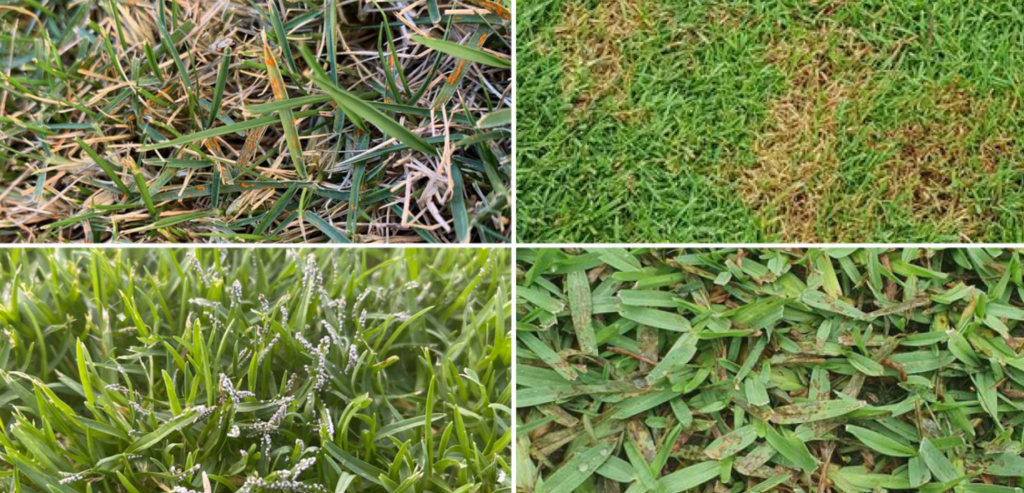
Maintaining a lush and green lawn is a source of pride for many homeowners. However, fungal diseases can quickly ruin a well-manicured lawn, leaving behind unsightly patches and damaging the grass. In this blog post, we’ll discuss some common fungal diseases that can affect lawns and provide tips for understanding and controlling them.
Types of Lawn Fungal Diseases:
Brown Patch
This disease is caused by a fungus that thrives in warm and humid conditions. Brown patch appears as circular brown patches on the lawn, ranging in size from a few inches to several feet in diameter.
Dollar Spot
Dollar spot is a fungal disease that appears as small, silver dollar-sized patches on the lawn. The affected areas can be identified by their distinctive white mycelium.
Mow your lawn
Mow often but beware that mowing the blades too short weakens the grass plant, making it more susceptible to infection. Most grass types should be mowed using a high mowing setting.
Snow Mold
This fungal disease occurs in areas with heavy snowfall and causes grey or pink patches on the lawn.
Fairy Ring
Fairy ring is characterised by a ring of dark green grass, which is often surrounded by a ring of dead or dying grass.
Prevention Strategies:
Proper Lawn Care
Regular mowing, watering, and fertilisation are essential for a healthy lawn. By keeping the grass at the right length and providing it with the proper nutrients, you can create an environment that is less hospitable to fungal growth.
Avoid Over-Watering
Over-watering can create conditions that are ideal for fungal growth. Water your lawn deeply and less frequently to encourage deep root growth and prevent fungal infections.
Good Air Circulation
Proper air circulation is crucial for preventing fungal diseases in lawns. Trim back any overhanging branches or bushes that may block the air circulation.
Fungicides
If you have a severe fungal infection in your lawn, you may need to use fungicides to control the spread. However, be sure to follow the instructions carefully and only use fungicides as a last resort.
Conclusion:
By understanding the types of fungal diseases that can affect your lawn and following the prevention strategies outlined above, you can protect your lawn and keep it healthy and green. Remember to keep an eye out for any signs of fungal infections and take action quickly to prevent the disease from spreading. With proper care and attention, you can enjoy a beautiful and thriving lawn for years to come.
Give us a call at Turfman and see how one of our friendly experts can help you today!
